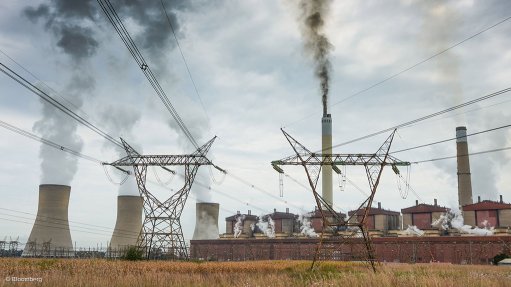Oh! Oh! Toto
As all our readers will know, in aerodynamics, the Joukowsky transform is used to solve the two-dimensional potential flow around a class of aerofoils known as Joukowsky aerofoils. A Joukowsky aerofoil is generated in the complex plane (Z-plane) by applying the Joukowsky transform to a circle in the zeta-plane. The Joukowsky transform is named after Nikolai Zhukovsky, who published it in 1910. There also exist other transforms.
I know that very few readers, if any, will follow what this is all about. Skip a paragraph or else read on: it’s about the Mercedes Formula 1 car. But first some history. The Wright brothers (the first to fly in a heavier-than-air, self-propelled aircraft) first flew in 1903. They had measured the lift coefficient for their aerofoils by mounting various scaled-down aerofoil sections on the handlebars of a bicycle and balancing them against a flat plate at 90º to the airflow that resulted when the bicycle was moving. This gave them an idea of comparative lift coefficients for various sections. Mathematically, one can use streamlines around a section to determine lift. It’s easy to calculate these for a circular section but hard for an aerofoil wing section. Where the Joukowsky transform assists is that it can mathematically convert a circular section with streamlines to an aerofoil section with streamlines (using eigen vectors, if you have to know).
Moving on – all you have to take away from this is that, until computers became commonly used, the only way to determine airflow around any shape was to use either a wind tunnel or mathematical calculations. Importantly, it was found that, mathematically, certain aerofoil sections have ‘zeros’ where streamlines meet the section surface, and these points have sudden pressure discontinuities. The existence of these ‘zeros’ on an aircraft wing are not very important, since they are dependent on the air speed and the wing angle (climbing or otherwise). After the invention of fast computers, wind tunnel tests and mathematical calculations could be dispensed with since one can use computerised fluid dynamics (CFD) modelling programs. These are very useful but, a big But, they will not show up ‘zeros’ much.
Enter the 2022 F1 racing season. Those who follow the F1 racing season will know that Mercedes has redesigned its car and that it has got ‘porpoising’ problems – the violent bouncing motion of the car on its suspension seen mainly on the straights. It’s caused by the ground effect downforce generation. When the floor generates downforce, it pushes the car closer to the track, thus reducing the ride height. The lower the car gets, the quicker the air passing the car is accelerated and that, in turn, creates even more downforce. The question is: Why didn’t the Mercedes engineers pick this up in the design or in wind tunnel tests (which, surely, must have been undertaken). I think they were hypnotised by the CFD program and didn’t look at the wind tunnel tests closely enough. The bouncing is caused by pressure discontinuities, the ‘zeros’. Note that the FIA has put restrictions on wind-tunnel testing. The scale models used may not be any larger than 60% of a full-size car, and speeds are limited to 50 m/s (180 km/h). So, CFD is widely used. And does not show ‘zeros’.
Mercedes engineers are in a hurry to fix the problem and (I’m guessing here) they don’t really know what is causing the problem or how to fix it (I’ve been in this situation myself). Now, I am an African consulting engineer in a country which has trouble keeping the lights on, but which proposes an all-electric-car Grand Prix, so much of what I have written may well be moonshine. It does seem strange, doesn’t it? Mercedes automotive engineering has to be just about the best in the world. How could they get it so very wrong? Is it just an advertising stunt? Surely not. But I am sure that they will solve the problem, they always have. Look at https://complex-analysis.com/content/joukowsky_airfoil.html and page to the bottom.
Article Enquiry
Email Article
Save Article
Feedback
To advertise email advertising@creamermedia.co.za or click here
Comments
Press Office
Announcements
What's On
Subscribe to improve your user experience...
Option 1 (equivalent of R125 a month):
Receive a weekly copy of Creamer Media's Engineering News & Mining Weekly magazine
(print copy for those in South Africa and e-magazine for those outside of South Africa)
Receive daily email newsletters
Access to full search results
Access archive of magazine back copies
Access to Projects in Progress
Access to ONE Research Report of your choice in PDF format
Option 2 (equivalent of R375 a month):
All benefits from Option 1
PLUS
Access to Creamer Media's Research Channel Africa for ALL Research Reports, in PDF format, on various industrial and mining sectors
including Electricity; Water; Energy Transition; Hydrogen; Roads, Rail and Ports; Coal; Gold; Platinum; Battery Metals; etc.
Already a subscriber?
Forgotten your password?
Receive weekly copy of Creamer Media's Engineering News & Mining Weekly magazine (print copy for those in South Africa and e-magazine for those outside of South Africa)
➕
Recieve daily email newsletters
➕
Access to full search results
➕
Access archive of magazine back copies
➕
Access to Projects in Progress
➕
Access to ONE Research Report of your choice in PDF format
RESEARCH CHANNEL AFRICA
R4500 (equivalent of R375 a month)
SUBSCRIBEAll benefits from Option 1
➕
Access to Creamer Media's Research Channel Africa for ALL Research Reports on various industrial and mining sectors, in PDF format, including on:
Electricity
➕
Water
➕
Energy Transition
➕
Hydrogen
➕
Roads, Rail and Ports
➕
Coal
➕
Gold
➕
Platinum
➕
Battery Metals
➕
etc.
Receive all benefits from Option 1 or Option 2 delivered to numerous people at your company
➕
Multiple User names and Passwords for simultaneous log-ins
➕
Intranet integration access to all in your organisation

















